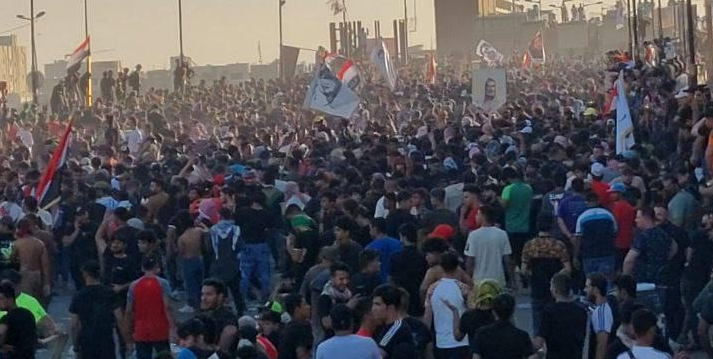 Dispatches
DispatchesGaithe Alwahab is a JURIST staff correspondent in Iraq and a law graduate of Al Iraqia University. Here he reports from Baghdad on the mass anti-government protest that took place in the city Saturday that was violently dispersed by security forces, leading to dozens of injuries to both protesters and police.
Yesterday was October 1, a day in Iraq that marked three years since the “October Revolution” first started in 2019, in which people from all of Iraq went out in the streets and protested the wrongful ways that our government has been administrated and the suffering that it has made us go through. Here in Baghdad, the capital, we saw how the government was getting ready for this day. Roadblocks were set up all across the city, security forces were posted in every main street, and military drills that shut down the entirety of Baghdad were conducted at night for a number of days. All of this was done to counter the large number of protestors expected to show up to revive the revolution.
In addition, it is important to remember that this time, the people protesting would not be alone. Another very large group of people expected to show up alongside the protesters and join them were the Sadrists, a very large group of people supporting religious leader Muqtada al-Sadar. This group was deemed to be much more dangerous than the average October revolution supporter since they are backed by the military wing of the Sadrist movement (Saraya al-Salam ). This time both of those groups would be against the formation of a government led by the old guards of Iraqi politics.
And so it started yesterday. Protesters started gathering in Baghdad’s Tahrir square after midnight and riot police were already there too. The Jumhoriya bridge near the square that leads to the Green Zone was already blocked, but it didn’t matter at that point since the number of protesters was still low and nothing really happened at night.
In the morning the numbers of protesters grew, not by a lot at first, but it was enough for them to try to cross the highly guarded Jumhoriya bridge at about 9am. This of course was met with a strong response by the riot police who started using tear gas grenades against the protesters. The protesters’ effort was enough to get them through the first wall of defense that was set up by the police, but definitely not the second line that consisted of large concrete T-walls.
The situation remained somewhat tense for the next few hours as the number of protesters kept growing in a slow manner. This was just enough to keep the clashes going between them and the riot police which resulted in injuries on both sides.
Starting from 5pm the clashes grew stronger and the numbers of protesters grew larger. Additionally other protests sprung up in other provinces in Iraq, especially in Nasiriyah, one of the southern provinces where a large number of people showed up and protested.
At night, at approximately 7pm, the number of protesters reached its peak since the heat of the sun had finally died down and more people came out to support the protest. However, the numbers were not sufficient to withstand the advance of the Iraqi riot police that started at 8:45pm. The advance was brutal and caused a lot of injuries among the protestors. The protest effectively ended at 10:30 pm and Tahrir square was occupied by the security forces and the Iraqi army.

